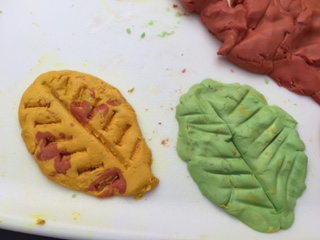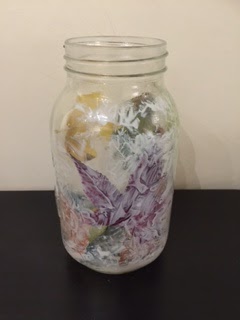Over the last couple of months, I have been reading about and following some of the suggestions in the book
Montessori Read and Write: A Parent's Guide to Literacy for Children, by Lynne Lawrence
in response to Wugs' recent interest in writing. At the same time as familiarising himself with the shapes of the letters, he has also been exploring the beginning sounds of certain words. Our favourite activities have included "I spy" games ("I spy with my little eye something beginning with "sss" - ie referring to the sound of the letter rather than its name) and pulling objects out of a mystery bag and then grouping the objects according to the starting letter of their names. Today's small world was an extension of these activities combined with Wugs' favourite type of play - sensory small world play.
The group of letters we have been exploring are S,M,A,T so I gathered objects that had these letters at the beginning of their words and arranged them in the play scene - a scorpion crawling out of the sea, a straw and piece of string buried in the sand, a landing spot made out of a mirror for air balloons and aeroplanes, an ambulance, a motorbike and truck travelling across the sand, a shark, turtle and scuba diver swimming in the sea near to a treasure chest and a spoon and a stick placed outside the box for Wugs to use to scoop or draw in the sand.
In a separate container, I placed the four letters that corresponded to the names of the objects in the play scene so that Wugs could match them up.
As the weather was sunny I took the small world into the garden and let Wugs play with it as he pleased. He pulled out the different objects asking the names of the ones he didn't know. He proceeded to write letters into the sand using the stick and manipulated the string into the shape of various letters. After he had finished writing, I asked him if he could find something that begins with "sss". He pulled out a straw and we put it in the container section under "s". We went through all the objects in the play scene until it was empty - some of the objects he identified correctly and some he struggled with, so I encouraged him to listen to the beginning sounds of the words.
Once all the objects had been taken out of the scene and categorised according to their starting letters, I let Wugs play with the scene as he wished. Interestingly he continued to refer to the objects using their beginning sounds even though we were no longer categorising them.
What we used:
Tub
Sand
Blue perspex (for the sea)
Water
Figurines and other small objects related to the letters
Wooden letters
Container for letters
( If I did this activity again I would probably use less figurines and more objects that he was less familiar with to make it more challenging).



















































